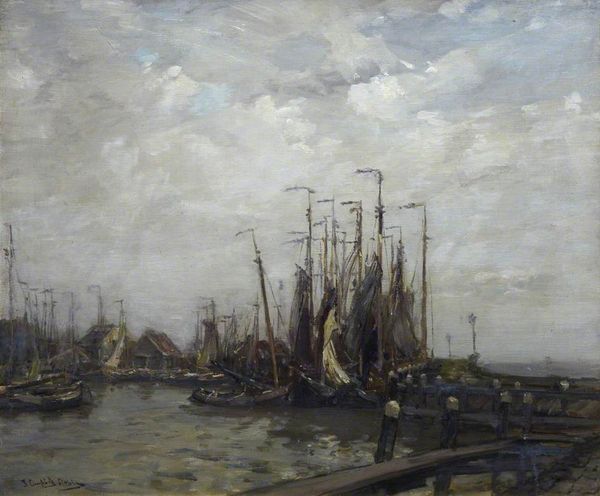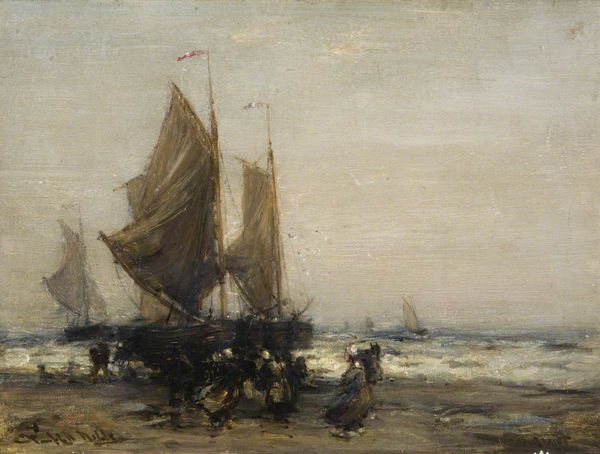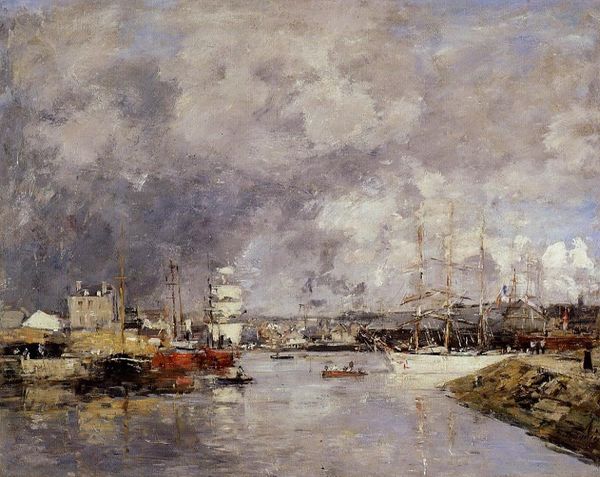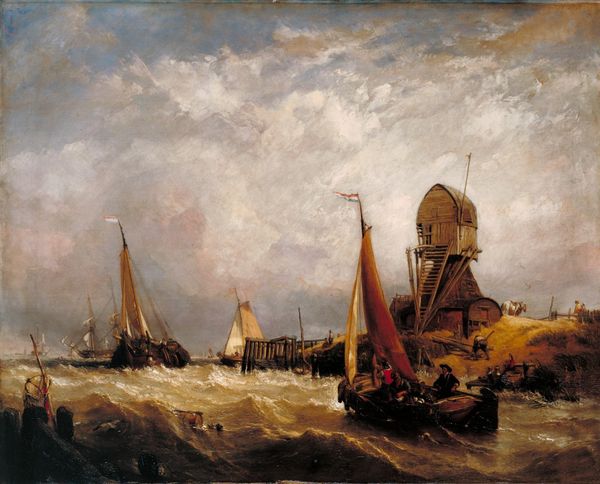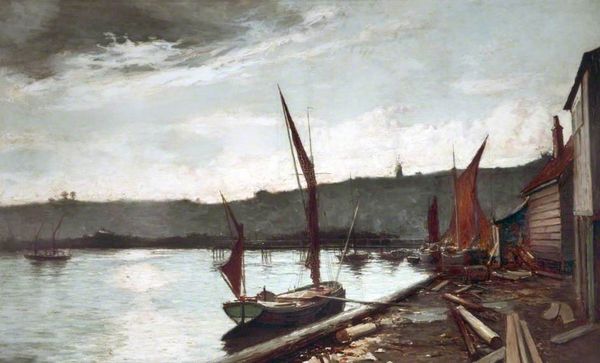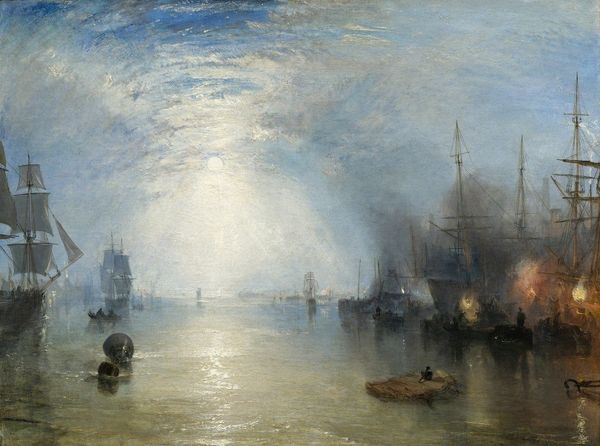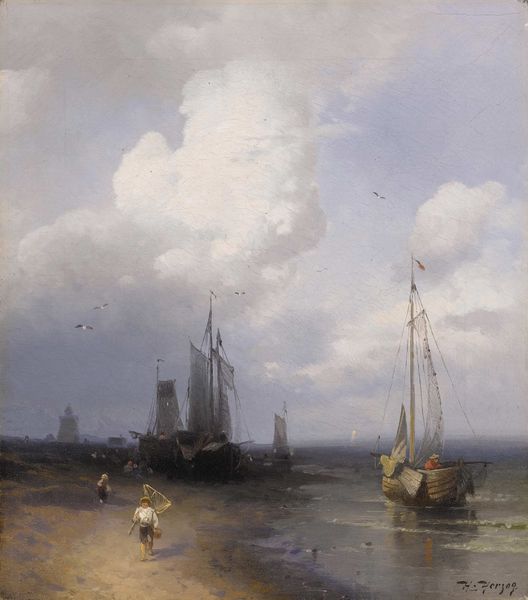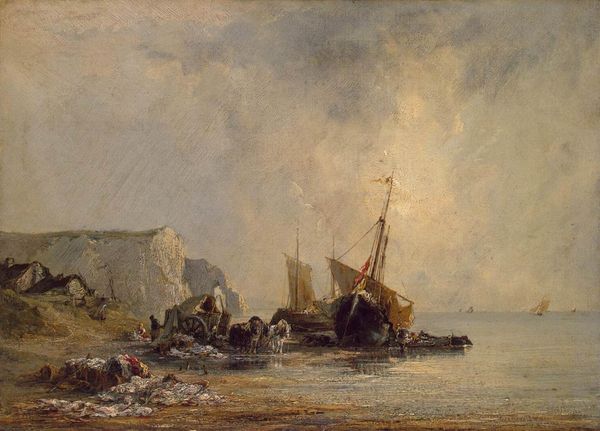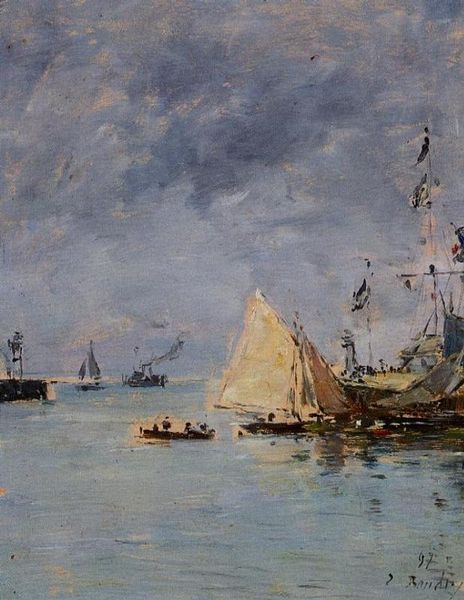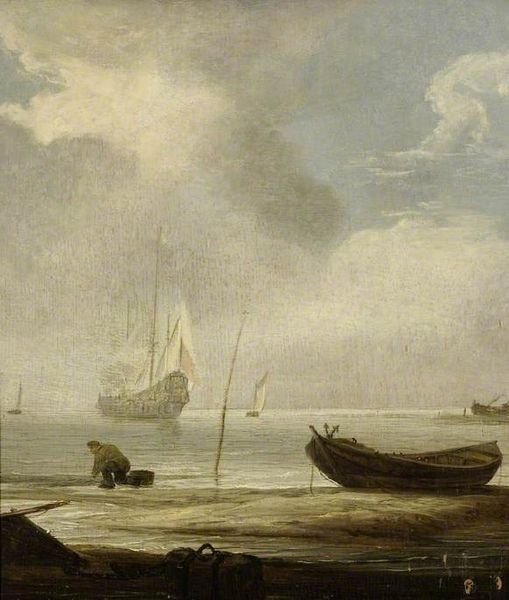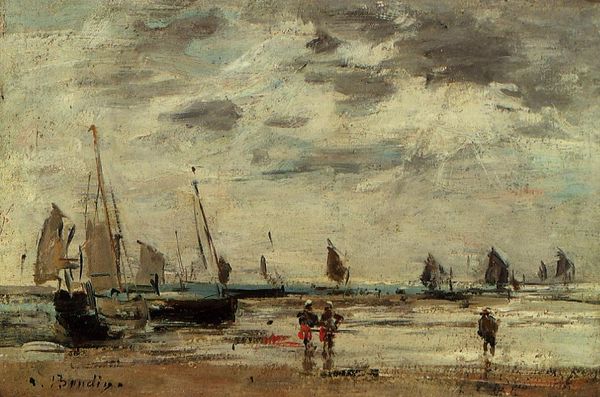
painting, oil-paint
#
boat
#
dutch-golden-age
#
painting
#
impressionism
#
oil-paint
#
landscape
#
water
#
cityscape
#
realism
Copyright: Public domain
Curator: Here we see James Campbell Noble's oil on canvas, "The Old Wharf, Dordrecht, Holland," created around 1880. What catches your eye first? Editor: The overwhelming sense of muted tones and layered brushstrokes creates a world shrouded in atmosphere, doesn't it? It’s all grays and browns that dissolve in the mists! Curator: Noble definitely emphasizes the impact of place here. The architectural symbols – the tower and the suggestion of a windmill in the distance – they ground us in a very particular visual history of Dutch painting. The waterfront was, and often still is, a gateway to global cultural and financial trade, representing both opportunities and potential threats in one’s journey through life. Editor: Exactly! And notice the relationship between the shapes and their compositional functions: the mast of the dominant boat almost bisects the plane of the picture vertically; a dark mass that rises to engage the billowing sky above; while, conversely, the solid horizontality of the tower and its neighbouring edifices grounds the work in a shared historical vernacular. Curator: Right, this push and pull resonates throughout the work, between these historical landmarks and also how it functions within its immediate history as part of an era of Impressionism where urban centers took on new significance. Water, here, serves not just as a functional trade route, but it mirrors back the emotions and daily lives of those in Dordrecht. The boats aren't just boats, they are almost metaphors. Editor: Beautifully said! There’s something about the layering of tones in the lower part of the painting too. From this near abstract zone emerges the recognizable hulls of several docked vessels that add further nuance to the tonal and architectural dynamic, pulling foreground to middle-ground with a shared visual language that has me thinking more about its overall structure than narrative elements alone. Curator: That focus on structure really enhances what the work embodies; we feel a historical trajectory between traditional artistic values and burgeoning modernist aesthetics. So much feeling captured with what looks like just a few tones and quick strokes! Editor: Indeed, considering all the points that have been revealed during this discussion has elevated my appreciation from simply ‘misted grey’ to active aesthetic contemplation. Thanks for joining me on this exploration! Curator: My pleasure. I always find these works allow us a new way of understanding cultural and psychological landscapes across generations through objects that remind us what it means to build upon a collective past.
Comments
No comments
Be the first to comment and join the conversation on the ultimate creative platform.
